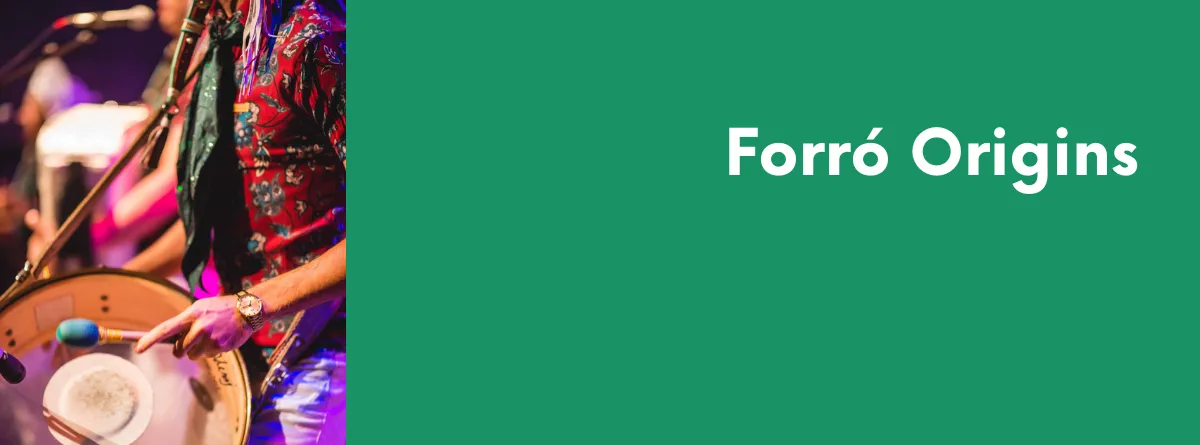By Sonja Graf, extract from the conference proceedings of the International Council for Traditional Music 31st Ethnochoreology symposium, 2021.
(from ForróLetters #5)
Beginning around 1875, a “forró” or “forrobodó” was a term used to refer to a party put on by the working class after a long day of labour in the Sertão, the arid northeastern region of Brazil (1). These festive gatherings were also referred to as “sambas de pé-de-serra” or “sambas” (2). The origin of the term forró is thought to come from a Bantu word “forrobodó,” which was brought to Brazil during the slave trade and meant
“‘mess’ or ‘confusion’, circumstances well suited to these folk dances of the Northeastern countryside in the 19th century… the meetings mixed varied musical styles… There was live music and dancing at these parties, people of all ages, married, single, children, adults, young and old. People danced alone or in pairs”. (3)
Forrós consisted of live music, food, drink and dancing, and were often held at someone’s home as a bonding occasion or for communal activities such as harvesting or building a house, wherein the community would share in the labour and after, dance on the dirt floor to press it down (4). Forró is also associated with festa juninas, celebrations that take place in June, honouring São João (Saint John).
At the end of the nineteenth century, many northeasterners migrated to the big cities in the south of Brazil, primarily São Paulo and Rio de Janeiro due to the harsh living conditions in the Sertão. Their music and dances journeyed with them and “forró houses” began to open up in the south where north-easterners could hear music and eat foods and share dances from their home region (5).
In the late 1980s forró gained recognition among the southern university students and as a result, the style “forró universitario” emerged: forró music began to take on modern influences from other genres such as Rock`n Roll, Samba, Funk and Reggae (6) and dancers began to incorporate movements from other dance forms, most notably integrating turns and arm figures from samba rock (7) as well as the intimate physical proximity from the lambada and salsa (8).
In the early 2000s forró dancing started gaining popularity in Europe and in 2008 the first international forró festival was held which took place in Stuttgart, organised by Terra Pasqualini. Thus spurred the small but steadily growing movement of international forró festivals, marathons and other forró gatherings and now forró can be found in almost every major city on the European continent including places such as Helsinki, Athens and even Novosibirsk!
References
1 [De Quadros Junior and Volp 2009; Fernandes 2005]
2 [Marcelo and Rodrigues 2012:18]
3 [Dias and Dupan 2017, p.9]
4 [Fernandes 2005]
5 [ibid.]
6 [De Quadros Junior and Volp 2009]
7 [ibid.]
8 [Fernandes 2005]

